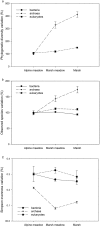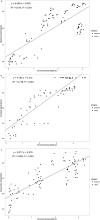Distinct Soil Microbial Communities in habitats of differing soil water balance on the Tibetan Plateau
- PMID: 28401921
- PMCID: PMC5388882
- DOI: 10.1038/srep46407
Distinct Soil Microbial Communities in habitats of differing soil water balance on the Tibetan Plateau
Abstract
Global change may be a severe threat to natural and agricultural systems, partly through its effects in altering soil biota and processes, due to changes in water balance. We studied the potential influence of changing soil water balance on soil biota by comparing existing sites along a natural water balance gradient in the Qinghai-Tibetan Plateau. In this study, the community structure of bacteria, archaea and eukaryotes differed between the different soil water conditions. Soil moisture was the strongest predictor of bacterial and eukaryotic community structure, whereas C/N ratio was the key factor predicting variation in the archaeal community. Bacterial and eukaryotic diversity was quite stable among different soil water availability, but archaeal diversity was dramatically different between the habitats. The auxotype of methanogens also varied significantly among different habitats. The co-varying soil properties among habitats shaped the community structure of soil microbes, with archaea being particularly sensitive in terms of community composition, diversity and functional groups. Bacterial and archaeal phylogenetic community turnover was mainly driven by deterministic processes while stochastic processes had stronger effects on eukaryotic phylogenetic community turnover. Our work provides insight into microbial community, functional group and phylogenetic turnover under different soil conditions in low-latitude alpine ecosystem.
Conflict of interest statement
The authors declare no competing financial interests.
Figures





References
-
- Clarholm M. Interactions Of Bacteria, Protozoa And Plants Leading To Mineralization Of Soil-Nitrogen. Soil Biol Biochem. 17, 181–187, doi: 10.1016/0038-0717(85)90113-0 (1985). - DOI
-
- Schlesinger W. H. & Andrews J. A. Soil respiration and the global carbon cycle. Biogeochemistry 48, 7–20, doi: 10.1023/A:1006247623877 (2000). - DOI
-
- Marschner P., Kandeler E. & Marschner B. Structure and function of the soil microbial community in a long-term fertilizer experiment. Soil Biol Biochem 35, 453–461, doi: 10.1016/S0038-0717(02)00297-3 (2003). - DOI
Publication types
MeSH terms
Substances
LinkOut - more resources
Full Text Sources
Other Literature Sources

